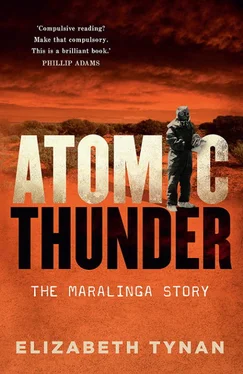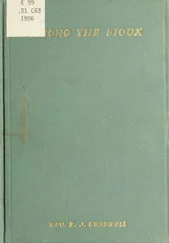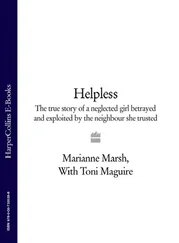Leaving such a substance lying around on the ground was reckless. The widely dispersed Vixen B plutonium was not enough to kill people immediately through radiation sickness, but it could cause cancer over longer time frames. Given the ‘dusty lifestyle’ of the Indigenous population in the area, this was an unacceptable risk according to accepted international guidelines on the use of radioactive substances. While the AWRE maintained it followed the protocols laid down by the International Commission on Radiological Protection at the time of Vixen B, the plutonium contamination around Taranaki shows these assurances to be unfounded. The commission protocols relevant to the British tests were established in 1950 and updated several times during the test program, most notably in 1958. By the time of Vixen B these protocols had established that there was no threshold above which exposure became dangerous. Any exposure was dangerous.
Another risk was visitors coming to the site and picking up ‘souvenirs’, also unacceptable under the guidelines. To this day, no-one knows if such mantelpiece ornaments are out there – for several years during the 1970s the test range was not patrolled, and anyone visiting the area could have picked up a lump of plutonium-soaked rock or metal. The Commonwealth Police provided security services at the Maralinga site throughout the test program and remained there until 1 March 1974. In December 1976, when stories started appearing in the South Australian media about the Maralinga aftermath, the Australian Federal Police resumed surveillance. In between, only two civilian caretakers were on site.
In 1979, as the Maralinga story was breaking in the national media, South Australian scientists found that 19 rabbits around the Taranaki site had taken up a variety of radioisotopes in their fur, including plutonium-239, and this was cause for some consternation. In their report, quoted by Australian journalist Robert Milliken, a prominent chronicler of the British nuclear tests, they noted, ‘It is possible for rabbits, that are notorious for their ability to excavate burrows in almost any material, to gain access to the [Taranaki test debris burial] pits by simply burrowing under the 6 inch concrete slabs… As we are discussing products that have a half life of 24 000 years, it would seem almost a statistical certainty that in some time in the future the rabbits may have access to a pit’. The pits were dug into limestone, which formed the walls of the pits, and capped with concrete.
After the well-controlled media coverage up to the mid-1950s, from 1957 onwards journalists stopped writing stories about the British atomic tests. Once Howard Beale had gone to Washington and William Penney was engaged in Operation Grapple in the Pacific and, later, with the UK Atomic Energy Authority, the ongoing activities at Maralinga were not reported. However, both the British and the Australian authorities knew the Vixen B trials might attract media interest and planned for it. A sequence of correspondence in the second half of 1960 disclosed some of the official thoughts shared between the respective governments.
On 27 September 1960, Maurice Timbs, assistant secretary in the Prime Minister’s Department (and from 1964 to 1973 an executive member of the Australian Atomic Energy Commission), sent Menzies a statement drafted by the British, to be used ‘in the event of any public disclosure of the existence of these experiments [Vixen B]… The intention is that it will be held in readiness and released only if there is a public disclosure that these experiments are being carried out’.
The letter had a handwritten annotation, above Menzies’ initials: ‘Discussed with Mr Townley [Defence minister] and approved as amended’. An attached media statement with handwritten corrections asserted that no nuclear explosions were being carried out on the Maralinga range. More detailed information about the activity at the range was crossed out, in particular a statement that the experimental program involved radioactive or nuclear materials. What remained was the following:
The Range is being used for experiments conducted on behalf of the United Kingdom Energy Authority which has a need to explore systems of safeguards [the previous few words crossed out by hand] to eliminate or to minimise the hazards which could arise from accidents involving radio-active materials. The Australian Government has agreed to the use of Maralinga for these experiments which are carried out in accordance with the requirements of the Safety Committee established by the Australian Government and under carefully controlled conditions to avoid any significant radio-active hazard.
On 20 October, the office of the UK high commissioner in Canberra replied, unhappy with ‘systems of safeguards’, saying it ‘may lead to difficulties and misunderstandings’ because it was similar to terminology being used in negotiations for the new Geneva nuclear weapons treaty. The International Atomic Energy Agency (IAEA) was also using the term in regards to civil uses of nuclear technology. ‘Thus the term “systems of safeguards” has already acquired rather special connotations. It is therefore felt that it would be better if possible to avoid it in the draft press statement.’
After further correspondence, a final version – with ‘systems of safeguards’ removed – was watered down a little more to produce a 100-word media statement. It was never issued, because no journalist ever inquired. Despite growing public disquiet since 1956, the media did not notice the signs that major activities were afoot at Maralinga, overlooking the increases in military personnel and much to-ing and fro-ing. Unless an official media release heralded it, the media seemed to show no interest in the events at Maralinga. Of course, this suited the British test authorities, who consciously sought to maintain secrecy.
The media blackout that descended over Maralinga was extremely successful. Given both the level of previous coverage of the British nuclear tests and the rise of anti-nuclear movements throughout the world, the lack of media activity is conspicuous. Vixen B, a test series that ran for three years and involved hundreds of personnel on site, does not appear to have been covered at all. As Lorna Arnold wrote, ‘Outside official circles, very few people apparently realised that Maralinga was used for these experimental programmes, and that it continued to be used after Antler’.
Arnold claimed that the British authorities were ‘particularly anxious’ not to attract any publicity during international negotiations to limit nuclear weapons testing. Vixen B was the major reason for this anxiety, since it produced nuclear fission, albeit in small amounts, and tested an apparatus that came close to many of the characteristics of an actual nuclear warhead. Vixen B was right on the borderline of international law and may have crossed into illegality. The behaviour of the AWRE authorities at the time suggests that they knew Vixen B was in a grey area and political reasons dictated secrecy.
Intergovernmental moves to find a politically acceptable way to slow the race for nuclear arms had begun in 1958. US president Dwight Eisenhower had proposed that test ban negotiations should begin on 31 October that year, pledging a one-year moratorium on weapons testing, and the Soviet Union had agreed. On that date, the Conference for the Discontinuance of Nuclear Weapons Tests had opened in Geneva. A moratorium on the testing of atomic weapons actually stayed in place until September 1961. In 1963, a permanent partial test ban treaty came into effect.
The Geneva agreement was a complication for the AWRE. The UK weapons authorities had no choice but to comply with the agreement, which was binding on the UK. On the other hand, they had an extensive program at Maralinga and plans to expand it. The easiest thing to do was to behave as though the minor trials were not happening. The attitude of the time was summarised by the Australian chronicler of the tests, John Symonds: ‘There is no reason to believe that these experiments could be regarded as an evasion of a Treaty, whatever the outcome of the present Geneva discussions. While there is no need to raise the point specifically in Geneva, there is no need to deliberately conceal it, but no public statement is to be volunteered’. Without public statements, there was no media coverage.
Читать дальше












